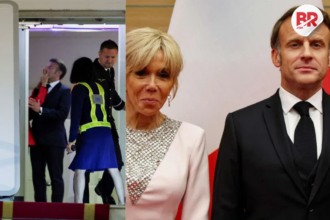
A brand-new Boeing 737 MAX jet, originally headed to China’s Xiamen Airlines, has made an unexpected return to the U.S. The aircraft, painted in full Xiamen livery, landed at Boeing Field in Seattle after pit stops in Guam and Hawaii.
This isn’t a mechanical issue or a pilot error—it’s geopolitics, pure and simple.

Tariffs Take Flight
The jet’s return follows a sharp escalation in the U.S.-China tariff war. The U.S. recently raised baseline tariffs on Chinese imports to 145%, while China fired back with a 125% tariff on U.S. goods—including American-made aircraft like the Boeing 737 MAX.
For context, the market value of a new 737 MAX is about $55 million. With the new tariffs, the added cost would make delivery to China financially unreasonable, if not impossible. That’s not just a bump on the runway—it’s a full stop.
Also Read US-China Trade War Escalates: Boeing Becomes Beijing’s Latest Target
Why This Matters to You
If you’re wondering why a jet’s round trip is worth headlines, think about what it signals: growing instability in global trade. When tit-for-tat tariffs can ground multimillion-dollar deals, the ripple effect hits not just airlines, but also supply chains, jobs, and prices.
Boeing is one of America’s largest exporters. If deliveries stall, it means production could slow, contracts might be deferred, and skilled workers might face uncertainty. That’s not just bad news for Boeing—it’s turbulence for the whole economy.
The End of Duty-Free Skies?
The aerospace industry has long enjoyed a kind of diplomatic immunity in trade. Planes and engines usually glide past tariff troubles. But this 737 MAX round trip signals a breakdown in that quiet understanding.
Boeing had only recently emerged from a five-year freeze on 737 MAX exports to China, caused partly by safety concerns and partly by earlier trade tensions. Now, just as the skies looked clear, the tariff storm rolled back in.
Aviation analysts say this could force other Chinese airlines to delay deliveries or even cancel orders. That leaves more jets sitting in U.S. warehouses with nowhere to go—expensive, idle reminders of policy gridlock.
Also Read Trade War Heats Up: China Tells Nations to Back Off or Face Consequences
Who Made the Call?
So, who decided to turn the jet around? Boeing? Xiamen Airlines? The U.S. government?
For now, neither company is talking. The silence adds to the mystery, but it’s likely that the decision was driven by cost rather than politics. Simply put, flying the plane to China and paying the new tariffs would have made the delivery a financial nosedive.
The Bigger Picture
This story isn’t just about one plane—it’s about a bigger collision between commerce and politics. The Boeing 737 MAX has been a symbol of both American engineering and global trust. Now, it’s caught in a battle where no one wins, and everyone pays.
And let’s be honest—when international diplomacy can ground a jet faster than a thunderstorm, we’ve officially crossed into trade war absurdity.
Also Read Vance Visit Tests India-US Relations as China Exclusion Roils Global Trade












